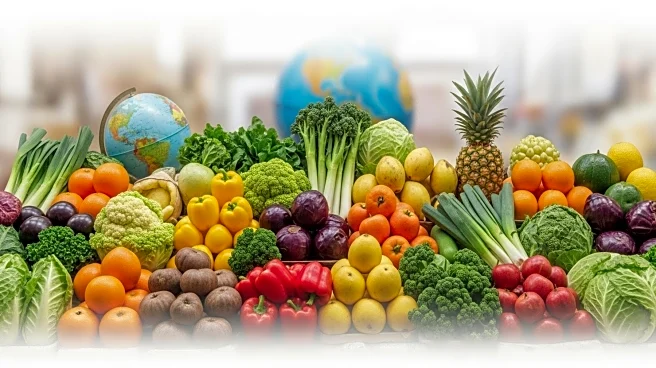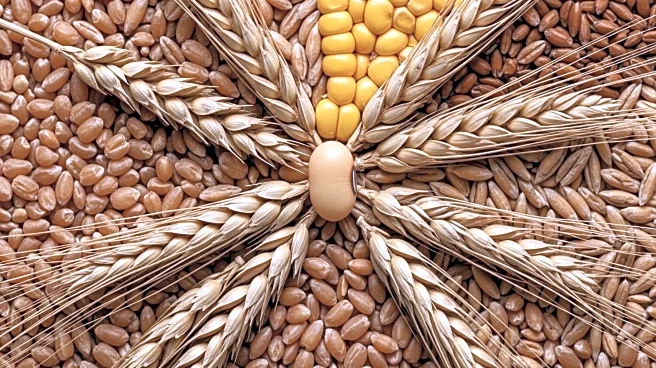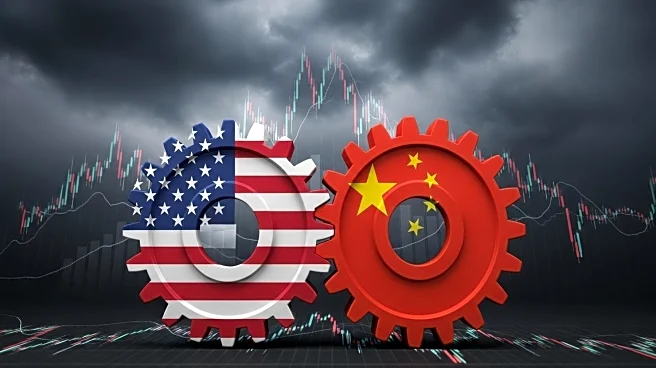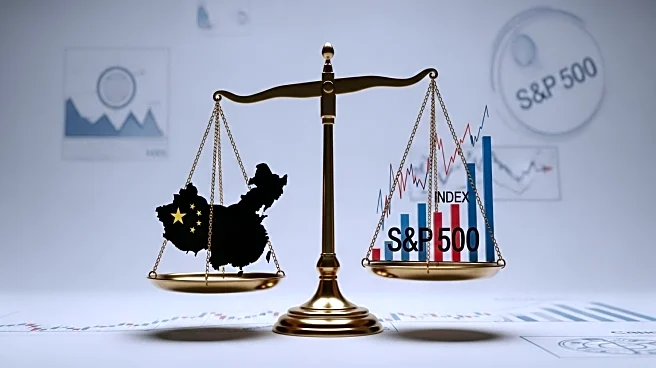What's Happening?
The U.S. agricultural markets began the week with mixed trading results, influenced by various global factors. December corn futures fell by 2¾ cents to $4.10¾ per bushel, while November soybeans saw a slight increase of 1 cent to $10.07¾ per bushel. Wheat futures also experienced declines, with December CBOT wheat down 1¾ cents to $4.96¾ per bushel. The market volatility is attributed to a lack of follow-through buying and weakness in meal prices, as noted by Karl Setzer from Consus Ag Consulting. Additionally, rapid planting in South America and uncertain U.S.-China trade relations have negatively impacted the soy complex and grains. Livestock markets showed positive movement, with December live cattle up $2.22 to $244.75 per hundredweight and December lean hogs increasing by 82 cents to $84.85 per hundredweight. Crude oil prices rose by 75 cents to $59.23 per barrel, while major stock indices like the S&P 500 and Dow Jones Industrial Average saw significant gains.
Why It's Important?
The mixed trading results in the U.S. agricultural markets highlight the ongoing challenges faced by farmers and traders due to global economic uncertainties. The fluctuations in commodity prices can impact the profitability of U.S. farmers, especially as they navigate the complexities of international trade relations and domestic market demands. The rise in livestock prices may benefit cattle and hog producers, but the overall volatility in grain markets could pose risks to crop farmers. Additionally, the increase in crude oil prices may affect transportation costs for agricultural products, further influencing market dynamics. The broader economic implications are reflected in the stock market gains, indicating investor optimism despite the agricultural sector's challenges.
What's Next?
Market participants will likely continue monitoring global trade developments, particularly U.S.-China relations, which could significantly impact agricultural exports. The ongoing planting season in South America may also influence future price movements, as it affects global supply levels. Farmers and traders may need to adjust their strategies based on these evolving conditions, potentially seeking alternative markets or diversifying their portfolios to mitigate risks. Additionally, any changes in U.S. trade policies or international agreements could alter the current market landscape, prompting further adjustments in trading practices.
Beyond the Headlines
The current market situation underscores the interconnectedness of global agricultural trade and its susceptibility to geopolitical events. The uncertainty surrounding U.S.-China trade relations exemplifies the broader challenges of maintaining stable international trade partnerships. Furthermore, the impact of South American planting on U.S. markets highlights the competitive nature of global agriculture, where shifts in production can have far-reaching consequences. These dynamics may prompt discussions on the need for more resilient agricultural policies and strategies to safeguard U.S. farmers against external shocks.











